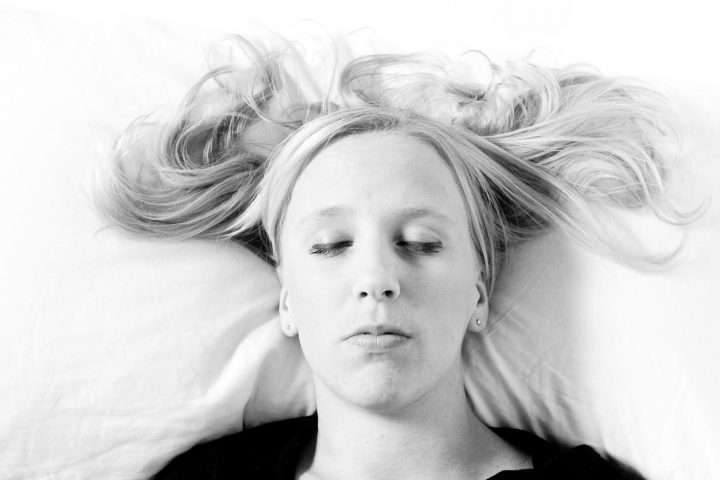
If you’re able to sleep on your back, you’re one of the few. Only 14% of us sleep this way.
What’s so great about sleeping on your back?
Back sleeping can help to reduce back and neck pain, minimize the effects of acid reflux, decrease wrinkles, and even help to maintain perky breasts!
While back sleeping can exacerbate snoring issues for some and isn’t recommended during pregnancy, it’s considered by many experts to be the healthiest way to sleep. Sleeping this way makes it easy for your head, neck, and spine to maintain what’s called a neutral sleeping position; they’re in near ideal alignment when lying on a flat surface.
Back sleeping is great — if you can pull it off.
It’s possible to learn how to sleep on your back, but it’s not easy for everyone.
Generally I sleep on my side, but lately I’ve found myself occasionally waking up on my stomach. I’ve started to develop a few random aches and pains, mostly in my back, and I worry that it may have something to do with my sleeping habits.
Thus, I recently decided to try sleeping on my back. I did some research and, armed with a few tips I discovered online, I committed to a best effort attempt at healthy back sleeping!
How Train Yourself to Sleep on your Back–First a Few Tips:
- Use positioning pillows. Extra pillows in the bed can help to keep your body positioned in whatever specific way works best for you. A pillow under each arm is a preferred technique, but do whatever works for you.
- Keep a pillow under your knees to help maintain proper alignment of your back. This can help if you’re experiencing any lower back discomfort.
- Be persistent. Always roll to your back when you catch yourself positioned otherwise.
- Use a pillow that will hold your head in place. What’s the best pillow for back sleepers? A malleable type like a buckwheat pillow works well. It will prevent your head from rolling from side to side and give you the best support.
My back sleeping experience…
I already have a great pillow. I love it—a buckwheat pillow. Most often, I sleep on my side, so it’s stuffed pretty full, with about 8 lb. of buckwheat hulls. I removed some of the fill to make it flatter, making it more conducive to back sleeping (when on your back there’s a much smaller space to fill between your head and the mattress).
“This will be no problem.”
My first night on my back was a total failure. I was exhausted and gave up after just a few minutes.
“Why can’t I sleep on my back?” I asked myself.
I shrugged and gave up for the night. So much for best efforts…
The following day at bedtime, I laid on my back reading and within about a half hour my lower back became slightly uncomfortable. Initially it wasn’t anything resembling pain. It wasn’t something I’d have noticed under normal circumstances-typically I’d just roll over to my side and the discomfort would immediately disappear. I resisted the urge to do so. Soon the slight discomfort became a dull ache. It wasn’t working. I pulled out another pillow and placed it under my legs. Still, it persisted. I gave up and fell asleep on my side.
Apparently stretching your hip flexors before you get into bed at night helps to eliminate lower back pain. I tried that. I’m not sure if it helped or not.
It was more or less the same struggle for the next few days.
To make any real progress, I had to experiment a lot with the pillows. I found that the pillow I used under my legs was initially a little too small and didn’t elevate them high enough to prevent the discomfort I was feeling in my lower back. I’m using a larger pillow now which has completely resolved that issue. To prevent myself from rolling over, I’m using a buckwheat pillow under each arm. This really helps to keep me anchored to my back (it’s also surprisingly comfortable).
Finally after 5 days of trying, I fell asleep on my back. Of course I woke up in the morning on my side, so there’s no telling how long I managed to stay in that position. My guess is not long. However, I feel like that was progress and I’ll keep trying.
The most important of the tips listed above is be persistent.
I found it incredibly difficult at first to resist the urge to roll onto my side. It’s hard to think rationally when you’re exhausted! It took a whole week just to get to the point where I could fall asleep on my back.
I’m still not a back sleeper and to be honest I’m not sure I can do it. I’m going to continue, but I’m not sure if this is a something that I can turn into a habit.
Try my recommendations and let us know your experience in the comments below.
(Edit 6/29/19) Why I can’t sleep on my back!
Back sleeping has genuine benefits, but it isn’t going to work for everyone.
I tried. I was persistent. But, in the end, I just wasn’t getting the same rest as I was while on my side.
For the moment, I’m OK with the mild discomfort associated with my somewhat haphazard side and stomach sleeping position(s). I might try again if the discomfort becomes something worse.
Sleeping on one’s back isn’t going to be ideal for everyone. So, after giving it a solid effort, be prepared to return to your old habits if that’s what works best.



